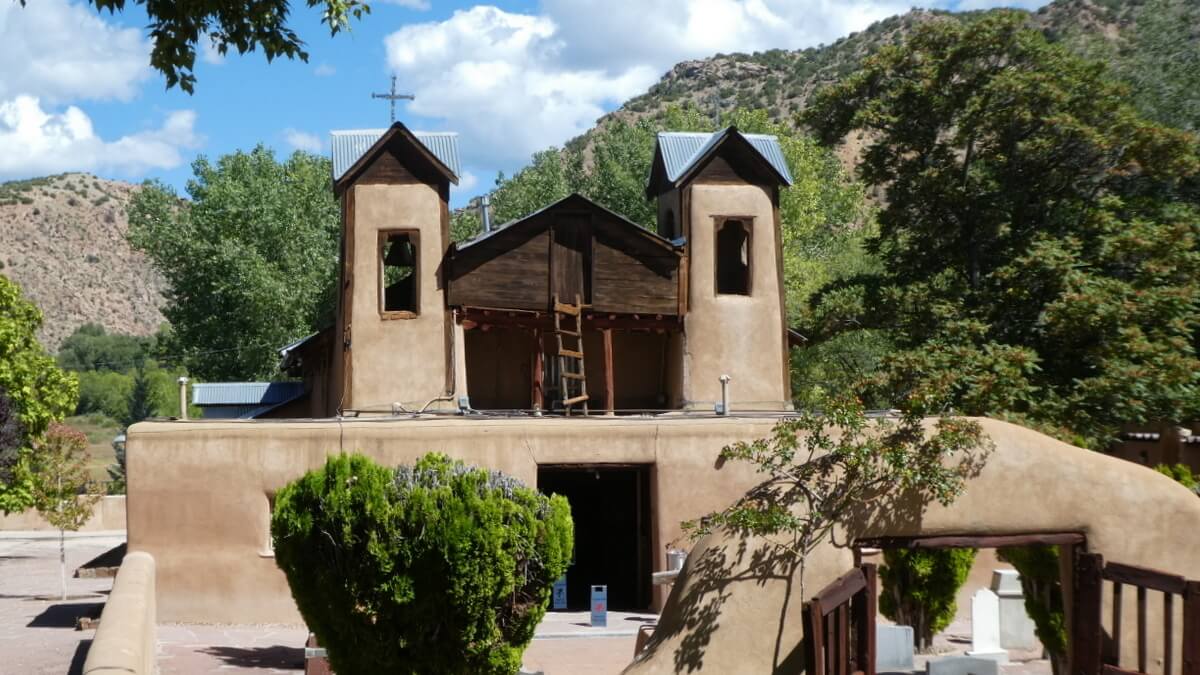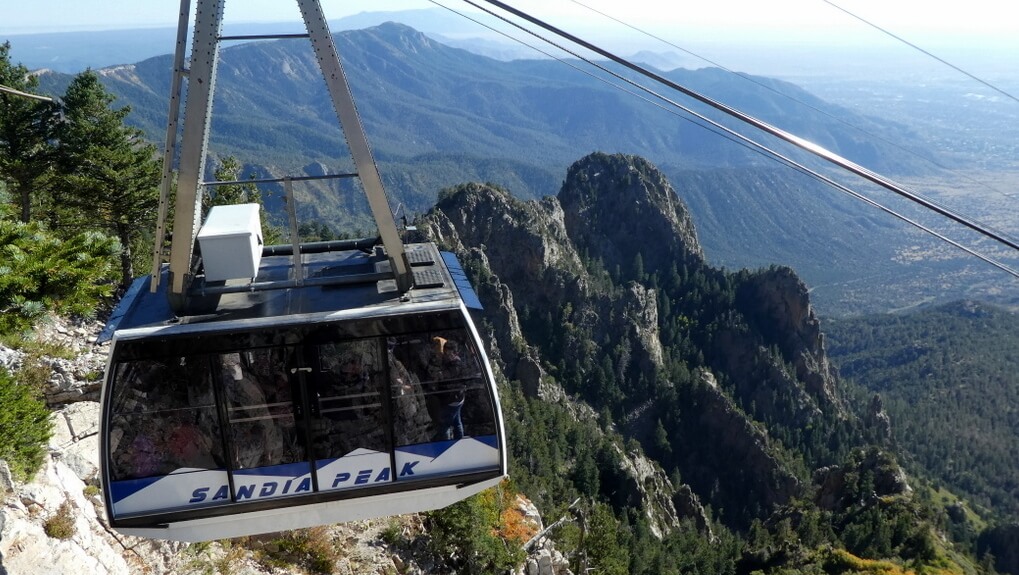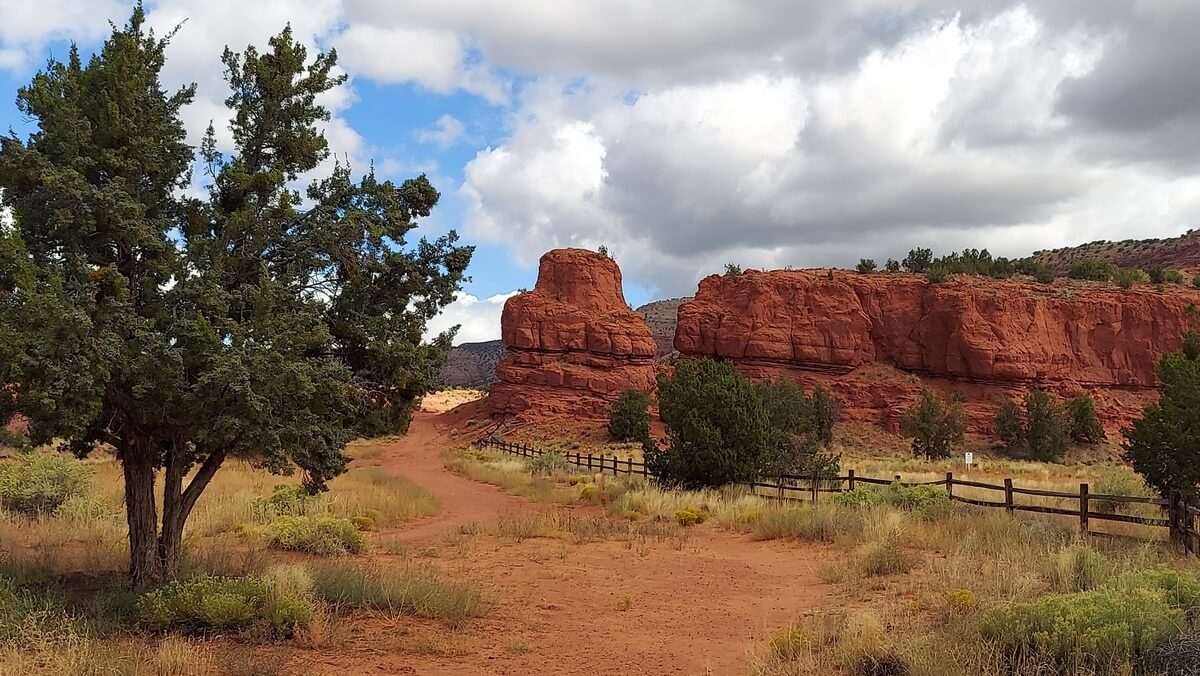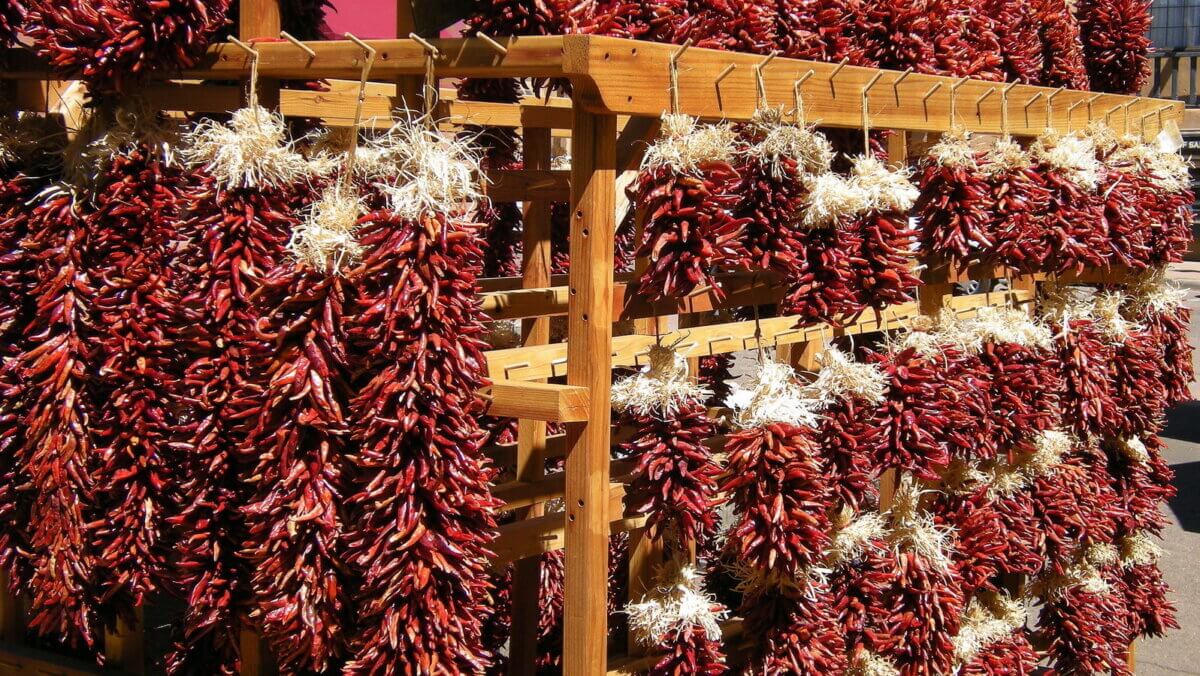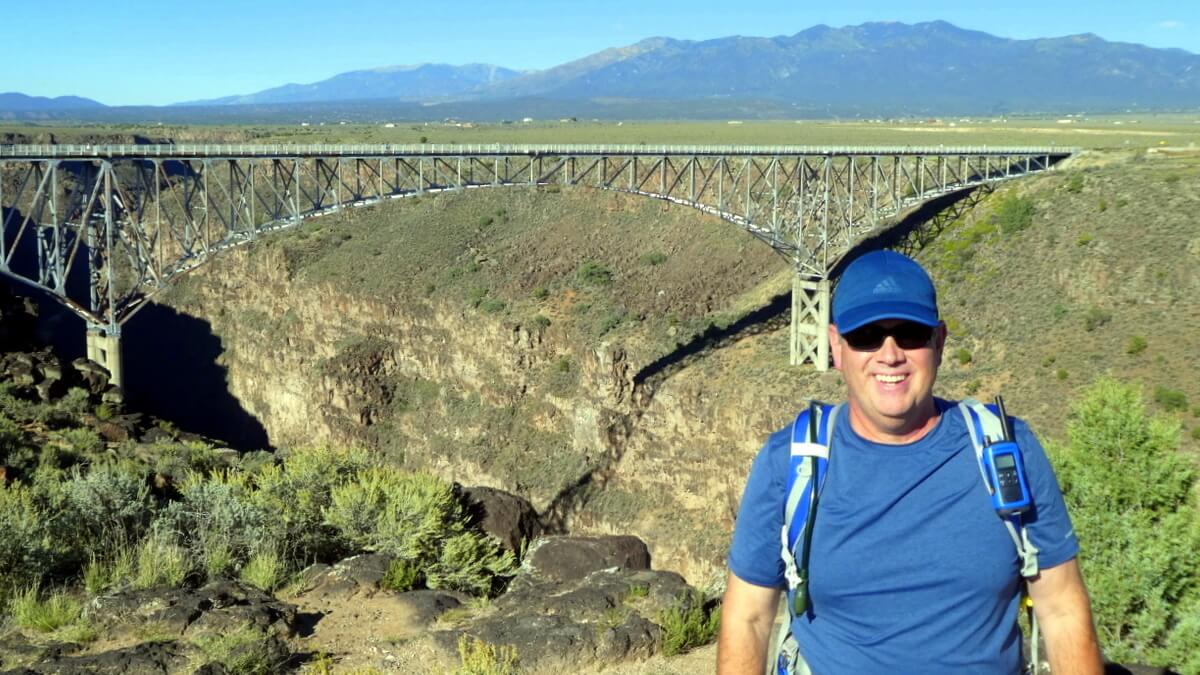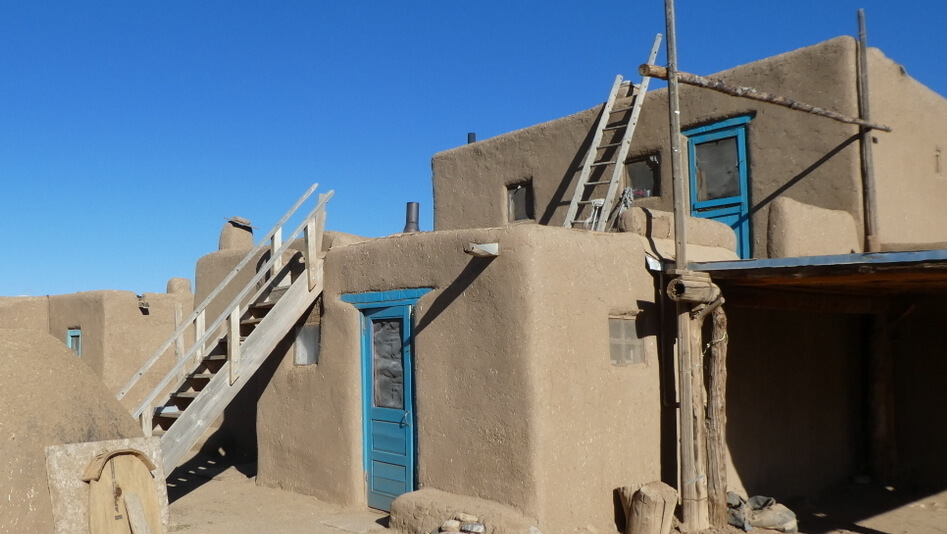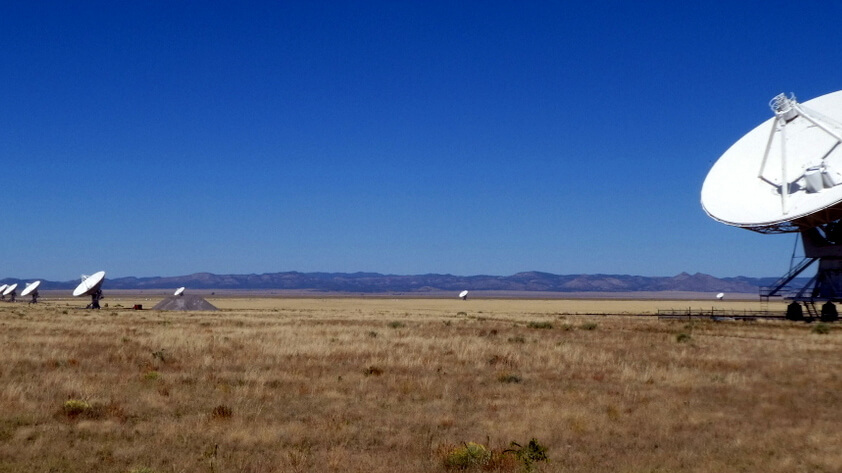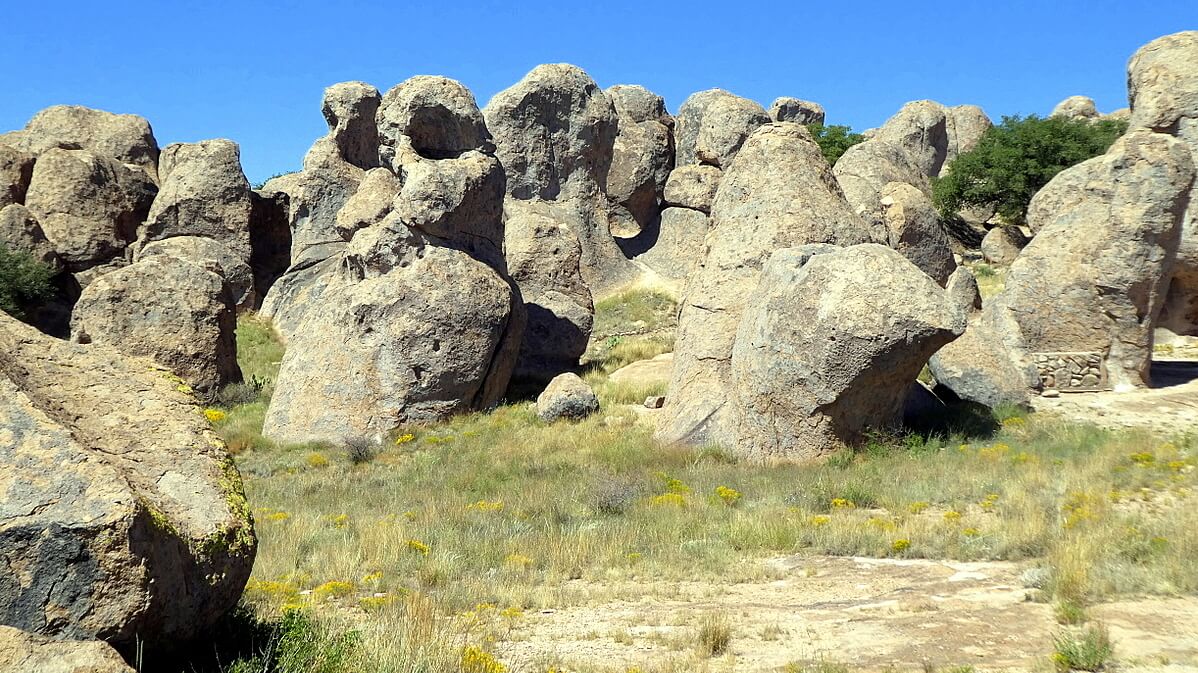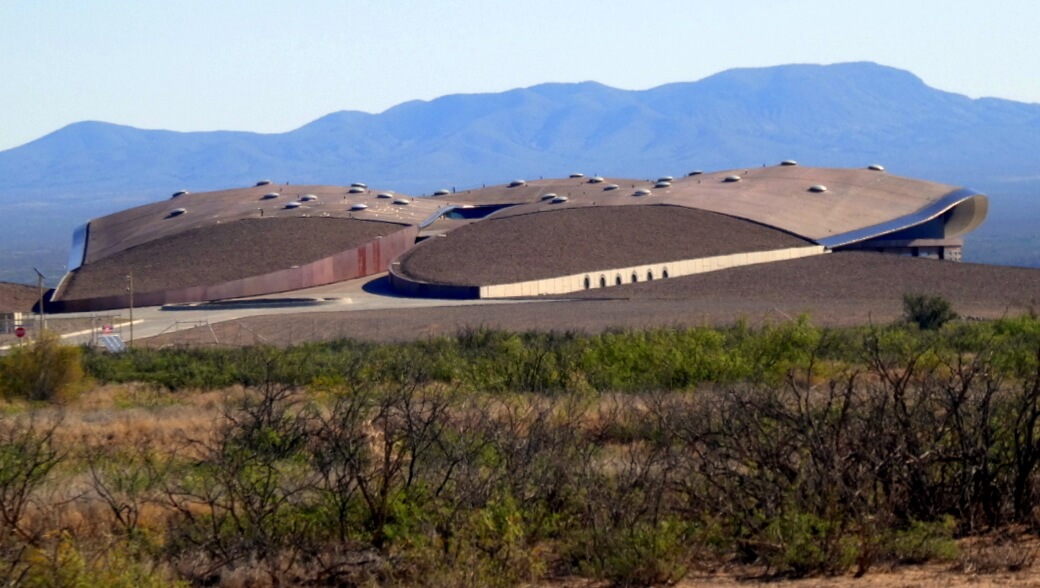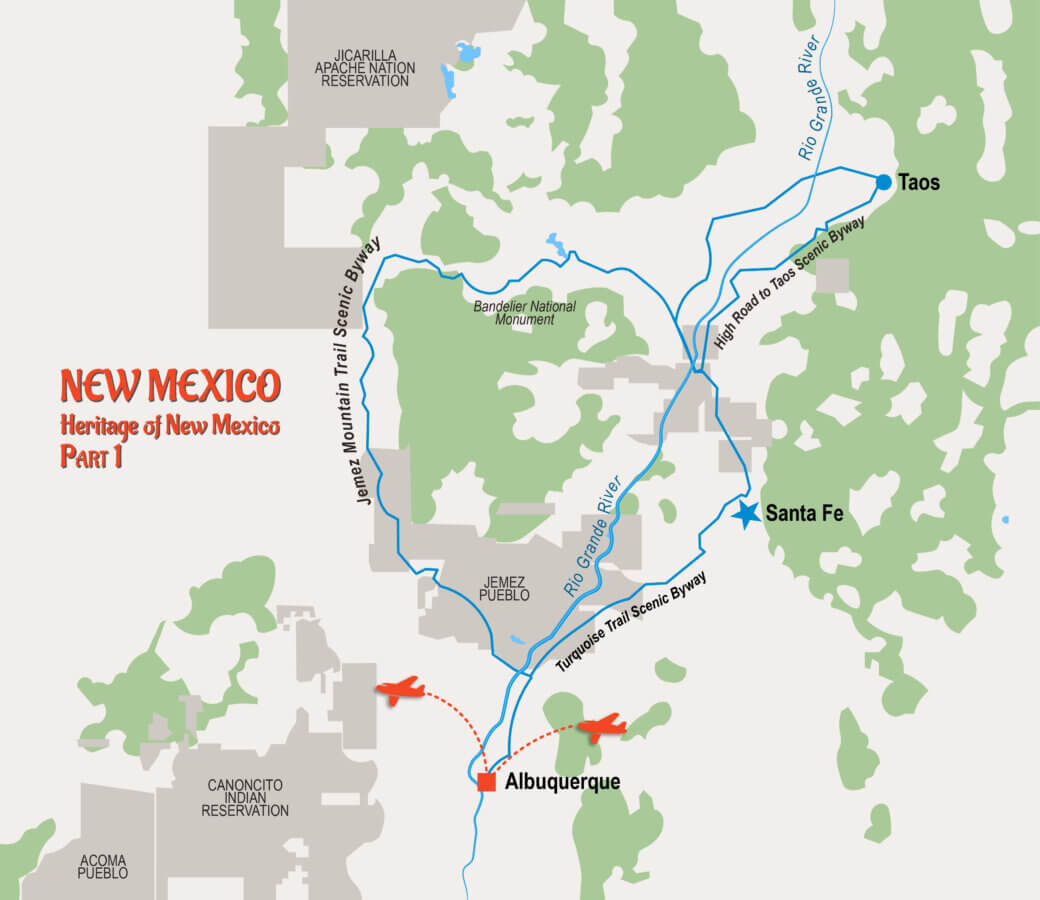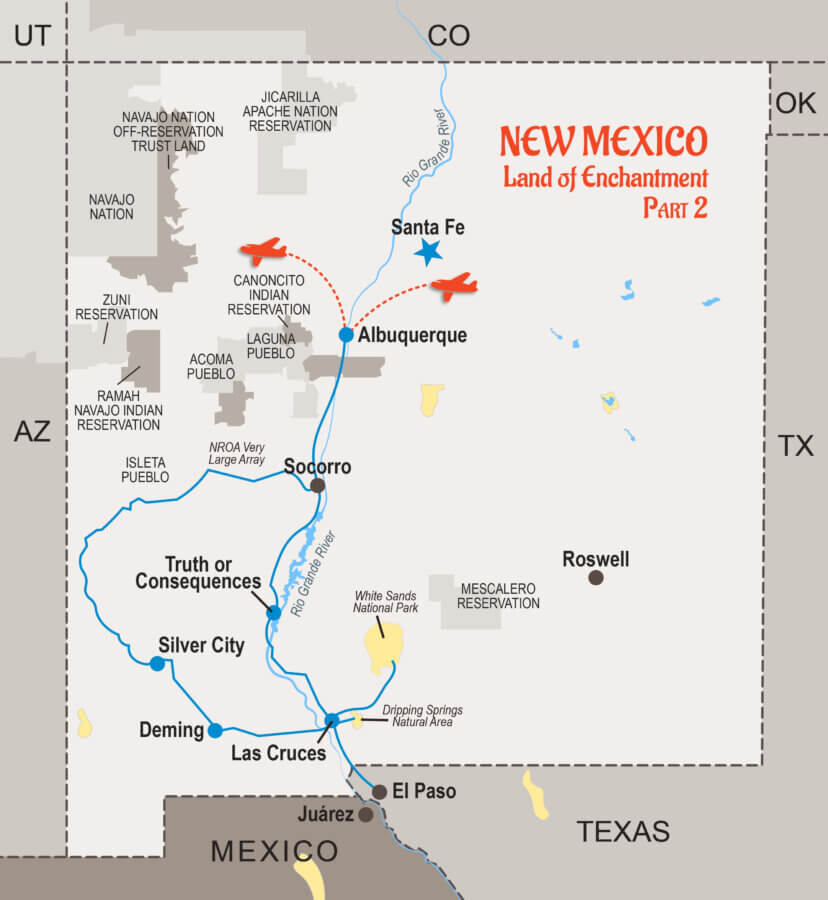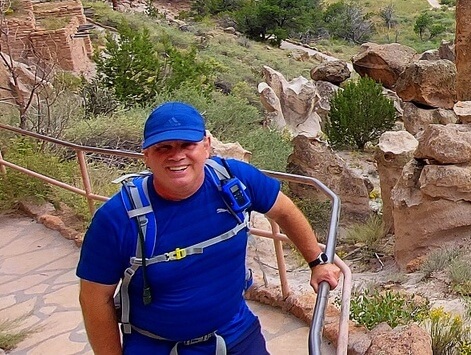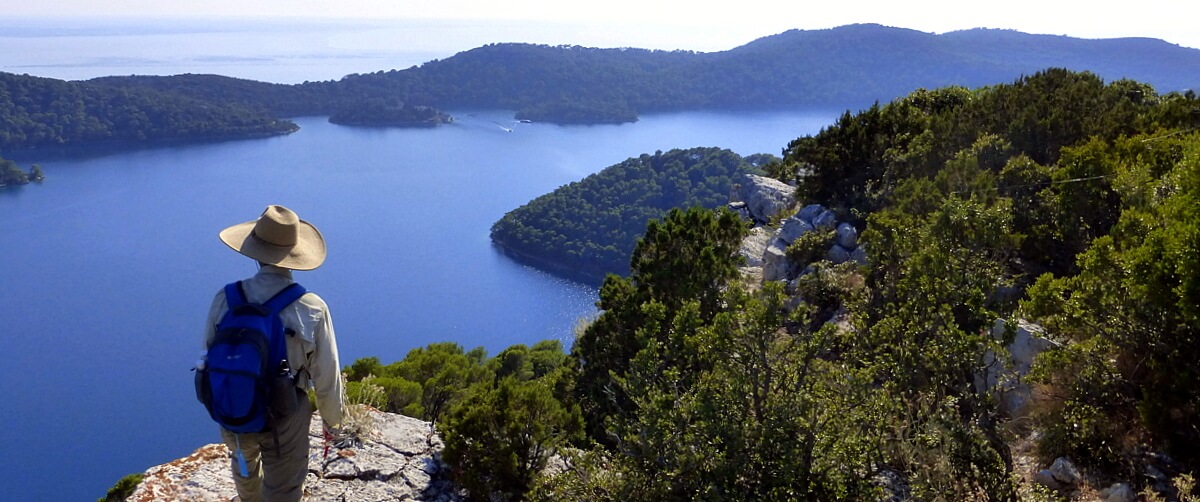Walk #4: Taos Kit Carson Walk – 5 km, rated 2A
Driving route: The High Road to Taos State Scenic Byway
After another fun breakfast on Santa Fe Plaza, we point our bus north to join the High Road to Taos Scenic Byway. This byway is another winding stretch of road through more picturesque northern New Mexico panoramas. Yesterday’s scenic byway featured native American heritage. Today we wind through an authentic remnant of colonial Old Spain, as evidenced in the religion, architecture, history, and people along the route.
Lovely, old, Spanish adobe churches are a theme of today’s drive, and our first stop is at Santuario de Chimayó with its famous El Posito, a hole in the floor of a side chapel filled with healing earth. This Spanish colonial church dates back to 1816, and the area was associated by Puebloan Indians with healing even before the arrival of the Spanish.
Today the church is considered the “Lourdes of America”, a significant Roman Catholic pilgrimage site with pilgrims leaving behind crutches and personal testimonies of miraculous healings.
From Chimayó, we wind northward through unforgiving badlands and brown mesas, dotted with scrubby pinon and juniper, the Jemez Mountains looming on the horizon. As we climb above 8,000 feet, the landscape changes to the green of ponderosa pine forests and pastoral scenes of high-altitude farms.
Our last stop before arriving in Taos is a second Spanish colonial church. San Francisco de Asis Mission Church was built between 1772 and 1816 by Franciscan missionaries to serve Spanish settlers and Native Americans. It is considered an architectural wonder with thick adobe walls and distinctive beehive buttresses and was brought to the attention of the outside world by renowned photographers like Ansel Adams and painters such as Georgia O’Keeffe. It remains an active parish but was also designated a National Historic Landmark in 1970 for both architectural and historic reasons.
Lunch together in Taos precedes our Taos Kit Carson Walk, a pleasant introduction to this place whose Spanish roots, like Santa Fe, pre-date those of East Coast Pilgrim and Puritan founders. Initially established by the Spanish in 1615, Taos (“Place of the Red Willows” in the local Tiwa language) was already the site of a well-developed Pueblo, which we will visit in a couple of days.
Our walk finishes in the busy center of Taos, packed with art galleries and shops, and passes both the home and tomb of fabled frontiersman, Kit Carson, who lived most of his adult life in Taos.
Enjoy a free evening for dinner and wandering from our hotel, located in the center of Taos just a stone’s throw from the plaza.
